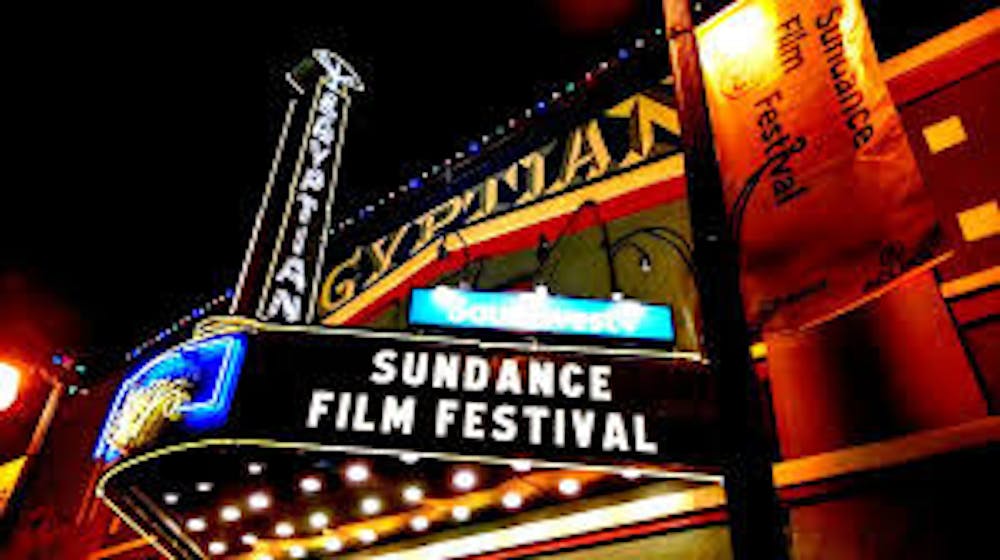With awards season postponed and few major film releases, it’s been an unusually dull time for us film geeks. Thankfully, film festivals are still a go, albeit online and with limited in-person capacities. One of them is the prestigious Sundance Film Festival, which kicked off on Jan. 28 and took place over seven days. Leaving behind its Park City venue of four decades, Sundance turned to a mostly virtual modality to deliver its screenings, talks and events.
A welcome to its stylized website came in the form of an engaging tutorial from none other than director Boots Riley, lecturing on “how to fest” — in other words, how to navigate the very pretty, user-friendly platform. Passes could be bought at any time, and screenings were filtered through helpful sections, which included Sundance’s New Frontier projects and Indie Series program.
While the premiere times and on-demand options made it very accommodating for international audiences, the passes for feature film screenings were limited to those only in the United States. From home in Canada, though, I could still get access to numerous live experiences that were available to watch just by making an account.
The seven short days were packed, giving me a chance to attend a good number of events. One that particularly stood out was a “shorts” screening of the 10 winning films from the 2020 Ignite x Adobe Short Film Challenge. From shorts like Kourtney Jackson’s immensely relevant Wash Day to Sean Wang’s touching portrait of life, Still Here, its focus on young artists and diverse, daring subject matter made it an exciting glimpse into the future of film.
On the flip side, I was equally fascinated by one of the talks, a Q&A with Hollywood veterans Robin Wright and Rebecca Hall. Both were at Sundance with their directorial debuts: Land, a hopeful look at a woman’s journey, and Passing, an idiosyncratic exploration of race, respectively. In the course of the brief chat, they surprisingly touched upon nearly every element of filmmaking — how their ideas came into being, how they found their crew and even how they caught the directing bug.
To my delight, this turned out to be only one of the dozens of intimate talks accessible to watch, where both pre-planned and live audience questions gave festival-goers a chance to pick at filmmakers’ brains. Whether it was for a fiction short or a documentary feature, looking into varying creative processes of directors, editors and producers was beyond illuminating, and many of their insights have stuck with me since.
Another event worth noting was the Sundance Dailies. Exactly what they sounded like, each session ran through the day’s assorted happenings while sprinkling in updates from Park City and interviews with special guests. And even better, it was all packed into a short and sweet, extremely watchable segment hosted by Festival Director Tabitha Jackson.
To wrap up my festival experience, I tuned into the live awards ceremony on Feb. 2, and there really wasn’t anything different or missing about the event when compared to in-person ones. Complete with a host, actor Patton Oswalt, and speeches in real-time from the award winners, the excitement was nearly palpable through the screen. Siân Heder’s CODA took home the top awards, including the Grand Jury Prize in the U.S. Dramatic Competition.
Given the all-around excellent programming, abundance of content and myriad of accessibility features, it’s clear that the Sundance team left nothing to chance. If I was hard-pressed to find one fault, it would be concerning the website itself. It sometimes took longer to load or gave me a bit of trouble when I was flipping between web pages, but it was really just an inevitable part of the online experience — and nothing we’re not already used to, anyway.
This year’s Sundance proves that a virtual film festival can not only be a reality but also be executed surprisingly and remarkably well. With nothing more than a laptop, I was able to experience the inimitable, electrifying Sundance spirit and get embroiled in the film world — even if only for a few days. Now, with Berlinale and eventually Tribeca on the horizon, I’m more than excited for what’s in store.





